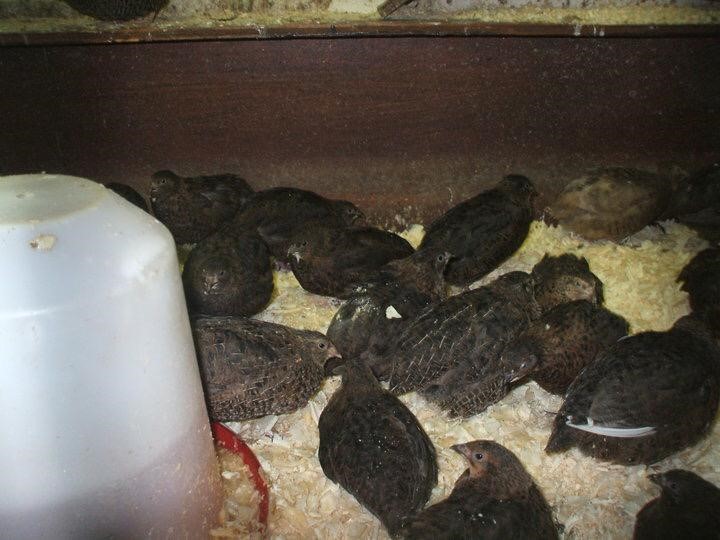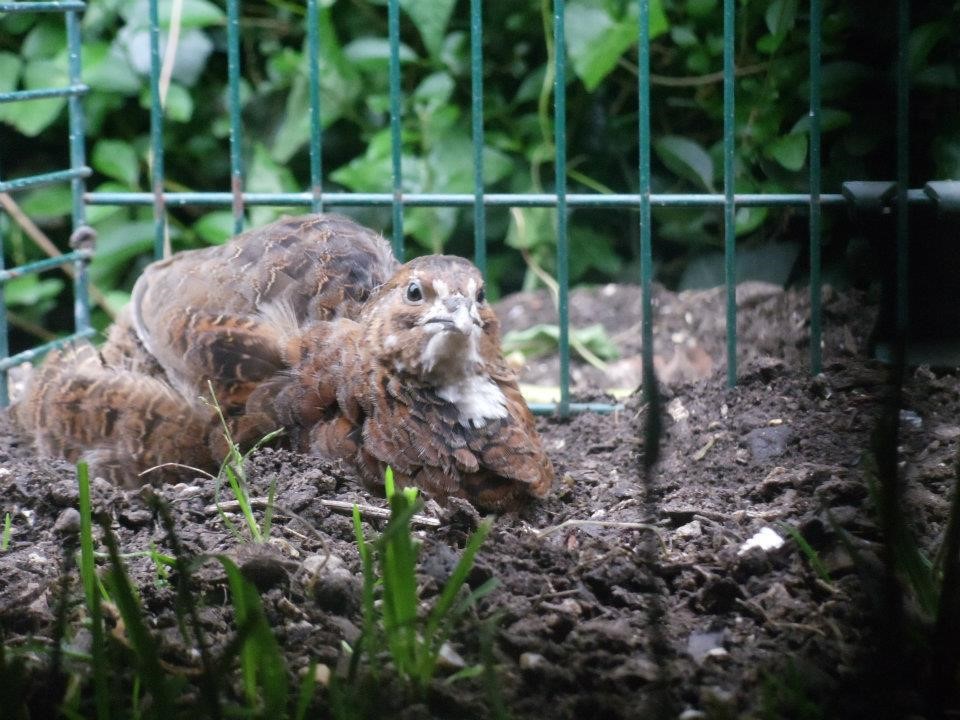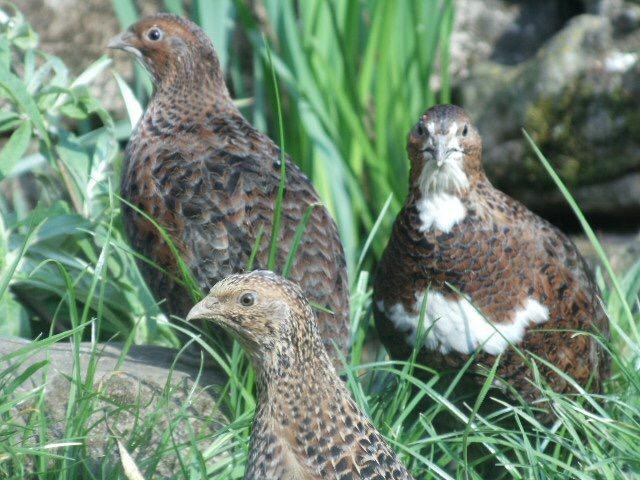



Raising quail with welfare in mind – an evidence-based approach
As their popularity as a farmed species grows, so does concern around quails’ welfare. Recent research, though, has offered insights into what rearing healthy, happy, high-performing quail means in practice.Japanese quail (Coturnix japonica) may appear to many as exotic, relative newcomers to the poultry sector but they have been part of the domestic bird scene since the 12th (potentially even the 11th) century.
Interest in quail farming has grown post World War II with more time and effort devoted to selective breeding and mass production. As consumer interest in quail gathers apace – for evidence of this, check the number of well-known retailers that now stock quail eggs – so the way in which the birds are farmed is being more closely scrutinised.
Quail reared for their eggs are normally kept in battery-cage-style systems, whereas quail reared for meat are generally housed in high-capacity barn systems. Concern with the animal-welfare compromises of these set-ups, and with large-scale imports of birds and eggs from low-regulation farms in, for example, France and Spain, has seen several UK-based producers develop free-range or higher-welfare quail farms over the past decade or so.
One of the key issues noted with maintaining welfare-friendly facilitates for quail production, as highlighted by organisations such as Compassion in World Farming, is the lack of legislation or regulation specific for quail. Below we look at some of the published work on recent developments in quail rearing and production that can help producers understand the need for welfare-friendly housing and management systems for these tiniest of commercial poultry.

Birds have filled their water drinker with sawdust due to attempts at dustbathing and the movements of birds in a small space; crowding of quail causes poor feathering, aggression and physical injuries to birds. © Arthur Parkinson
While quail are regarded by some as more disease resistant than other poultry, they will still suffer from many of the same pathogens or environmental stressors that cause heath issues in other farmed birds.
Specific health and welfare issues associated with high-intensity cage or barn systems include:
- Poor feather condition resulting from over-crowding and a lack of dust-bathing opportunities.
- Over-aggression that can causes feather picking/feather plucking and the appearance of bald patches or skin trauma.
- Multi-male breeding groups, causing females to experience high levels of sexual harassment and increased frequency of aggressive encounters between males.
- Coccidiosis (Eimeria sp.) and ulcerative enteritis (Clostridium colinum) can be common in unhygienic, heavily stocked systems, increasing operating costs and decreasing bird performance and, in the case of enteritis, causing up to 100 percent mortality of infected birds.
- Trauma to the bird’s head and neck, and potential fatality, caused by vertical take-off into heavy-gauge mesh or cage sides.
- Disturbance to resting birds, resulting in chronic stress and the potential for a poorer-quality carcass.
- Skin irritations and lesion, leading to spoiled carcasses from dirty, unhygienic litter in cramped conditions where checking on individual birds can be difficult to achieve.
Examples of evidence-based management for good health and production
Providing cover, room to move and space to escape from cage-mates seem to be some of the best ways for farmers to reduce health problems in their birds. Alongside this very common-sense approach, several research papers have shown ways of improving the lives of farmed quail. For example, higher light intensities of 250 lux have been showed to be detrimental to performance (live-weight attainment) and welfare (performance of naturalistic activity patterns), with quails reared in 10 lux conditions having heavier carcass weights and reduced prevalence of feather plucking (Nasr et al, 2019).
This research showed that rearing in 10 lux conditions also resulted in: increased slaughter weight (from 118g to 132g); decreased time spent feather picking (from 5 percent to 1 percent); a reduction in corticosterone (7.59ng/ml to 4.40ng/ml); and the heaviest egg weights (11.24g compared to 10.54g). The authors conclude that bright lighting is detrimental to quail well-being and egg and meat production.
Provision of the correct type of feed is obviously important to health, production and performance, but published research also shows that the way in which food is provided will affect how and when birds feed. Quail provided with circular feeding containers displayed higher levels of beneficial activity (preening, walking, stretching) and spent more time foraging compared to birds provided with longer, rectangular feeders or taller ones with limited feeding holes (Mohammed et al, 2019). These authors also noted that birds using a round feeder produced eggs of a significantly higher quality compared to those using the other feeder styles.

Not only does this behaviour reduce parasite loading, it also promotes good feather condition. Birds that have such a behavioural outlet can put more energy into meat and egg production as improved plumage condition will keep them warmer and better insulated. Dust-bathing can also reduce aggression between birds by providing a distraction and outlet for highly motivated behaviours. © Arthur Parkinson
Why is this research useful to farmers?
The wild ancestor of the domesticated Japanese quail is a ground-dwelling bird that lives in steppe and grassland habitats that offer dense cover. The cryptic brown plumage is used for camouflage and so quails are naturally shy. While domestication reduces these nervous characteristics and birds can be bred for traits that favour the human-created environment (Jones et al, 2002) bird health and welfare will be compromised if certain activities are not encouraged.
Quail may have been a domestic bird for around 800 years but compare this to the chicken, first domesticated some 8,000 to 6,000 years ago and a bird that has been through several domestication events since.
By contrast, in quail the propensity for wild-type characteristics to remain “just below the surface” is strong. It is thought that the original reason for domesticating Japanese quail was as a songbird and their range of vocalisations has important impacts on their behaviour and physiology, notably that a male’s call stimulates a female to come into breeding condition – something that farmers need to be aware of and make allowances for.

Quail enjoy spending time in cover and when farmers provide suitable safe, refuge areas, birds are healthier and more productive. © Arthur Parkinson
Selection for specific behavioural traits (eg sociability) can increase productivity and improve health (Mills and Faure, 2000). As selective breeding for production traits (eg increase weight gain or egg laying) only occurred at the start of the 20th century (and further development was heavily compromised by the outbreak of World War II), there is plenty more breed-refinement that can be done to promote individual behavioural traits more suited to production. For example, selection for “low-stress” traits (reduced plasma corticosterone) promotes sociability, which allows more birds to be housed together with reduced risk of aggression (Jones et al, 2002)
Final thoughts
Raising quail can be profitable and productive, and it can be conducted in a welfare-friendly environment. several British farms have set up free-range alternatives to barn or battery cage systems, with quail being housed outdoors in large netted enclosures where they have access to nesting areas areas, foraging areas, dust baths and piles or brush (or similar) for cover.
Domestication has seen farmed Japanese quail quickly lose their migratory urge (Derégnaucourt et al, 2005), but flight is probably more important to these birds than it is to the domestic chicken. Flight is a secondary defence response – like all gamebirds if running for cover doesn’t work then you launch yourself into the air.
“Free-to-fly” barns may sound like a perfect idea, but the numbers of birds kept in such systems may result in injury to the flying bird when it lands as well as to others around it. Cover appears particularly important in reducing flight in quail (Buchwalder and Wechsler, 1997) – consequently farmers can increase the energy that their birds put into weight gain or egg production (instead of fear-based behaviours) by enabling their birds to hide.
Such changes to industry come with their own trials. For example, quail won’t put themselves to bed in the same way that hens will, so the free-range farmer will need to check that everyone is tucked-in for the night.
| References | ||||
|---|---|---|---|---|
| Buchwalder, T. & Wechsler, B. | ||||
| (1997) | The effect of cover on the behaviour of Japanese quail (Coturnix japonica). Applied Animal Behaviour Science | 54 (4) | ||
| Derégnaucourt, S., Guyomarc'h, J. C. & Belhamra, M. | ||||
| (2005) | Comparison of migratory tendency in European quail Coturnix c. coturnix, domestic Japanese quail Coturnix c. japonica and their hybrids. Ibis | 147 (1) | ||
| Jones, R. B., Marin, R. H., Satterlee, D. G. & Cadd, G. G. | ||||
| (2002) | Sociality in Japanese quail (Coturnix japonica) genetically selected for contrasting adrenocortical responsiveness. Applied Animal Behaviour Science | 75 (4) | ||
| Mills, A. D. & Faure, J. M. | ||||
| (2000) | Ease of capture in lines of Japanese quail (Coturnix japonica) subjected to contrasting selection for fear or sociability. Applied Animal Behaviour Science | 69 (2) | ||
| Mohammed, H., Rehan, I. F., Abou-Elnaga, A. F. & Mohamed, R. A. | ||||
| (2019) | Effects of feeder shape on behavioral patterns, performance and egg quality traits of Japanese quail. Slovenian Veterinary Research | 56 (22) | ||
| Nasr, M. A. F., Mohammed, H., Hassan, R. A., Swelum, A. A. & Saadeldin, I. M. | ||||
| (2019) | Does light intensity affect the behavior, welfare, performance, meat quality, amino acid profile, and egg quality of Japanese quails?. Poultry Science | 98 (8) |









